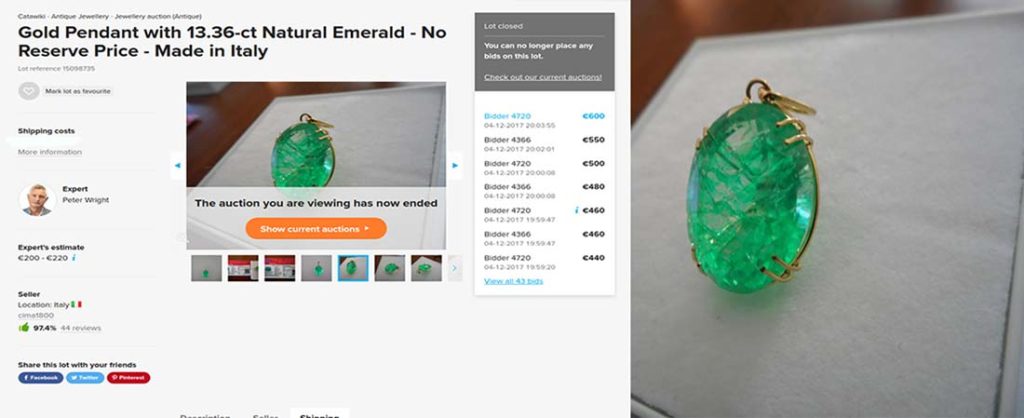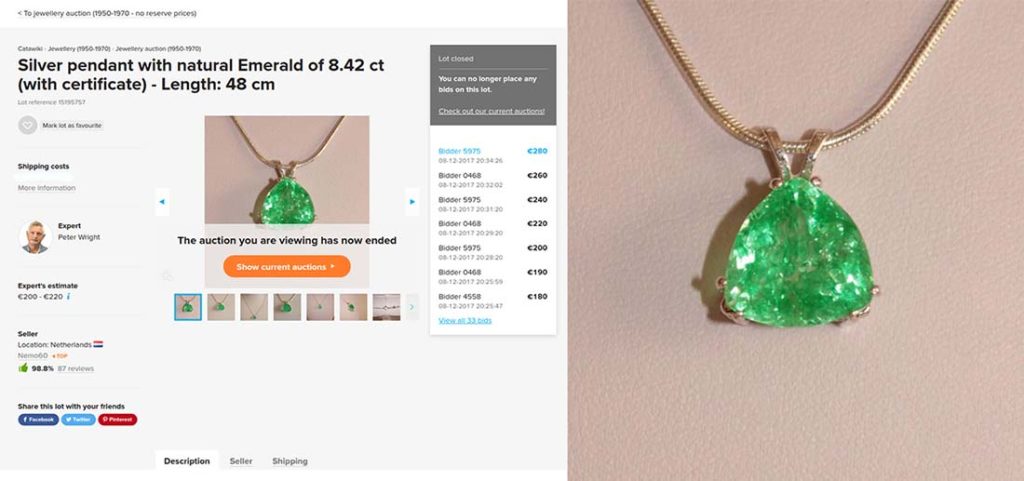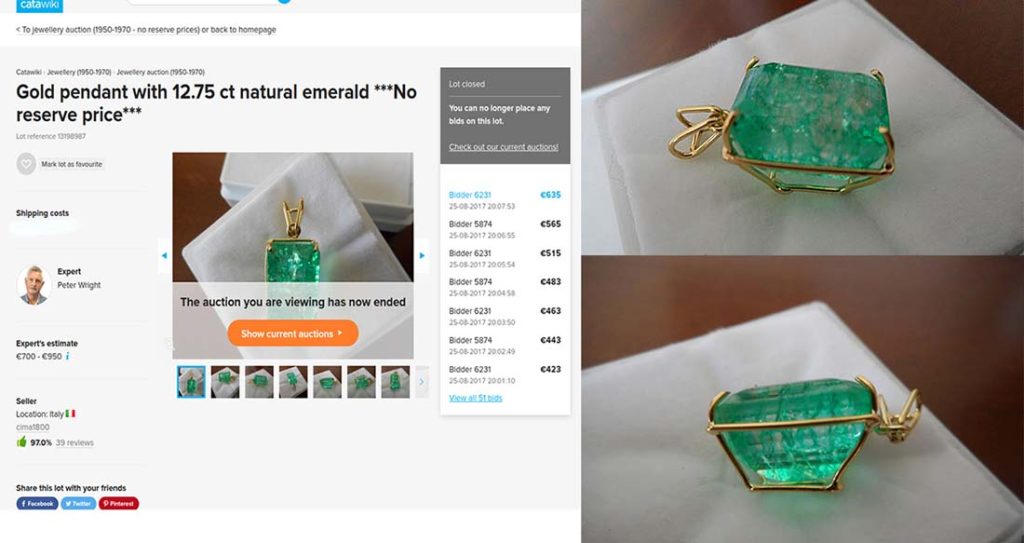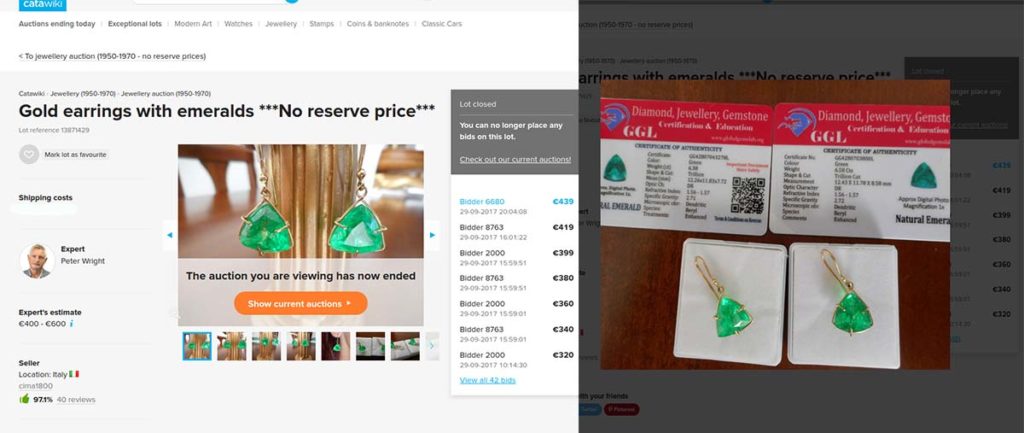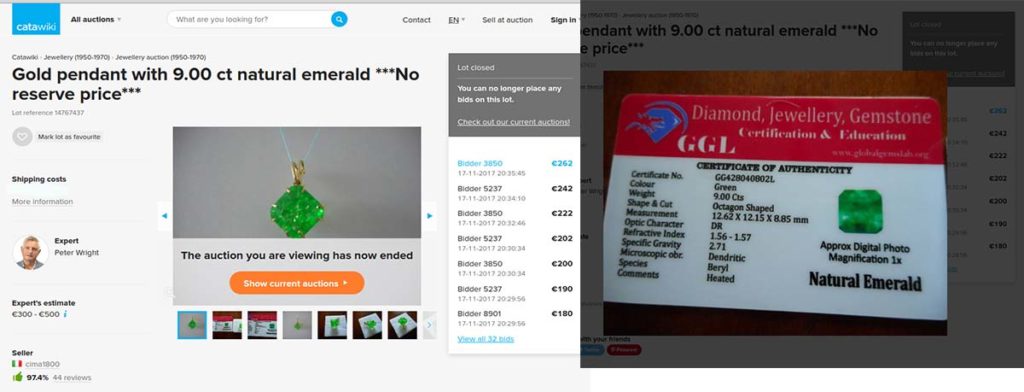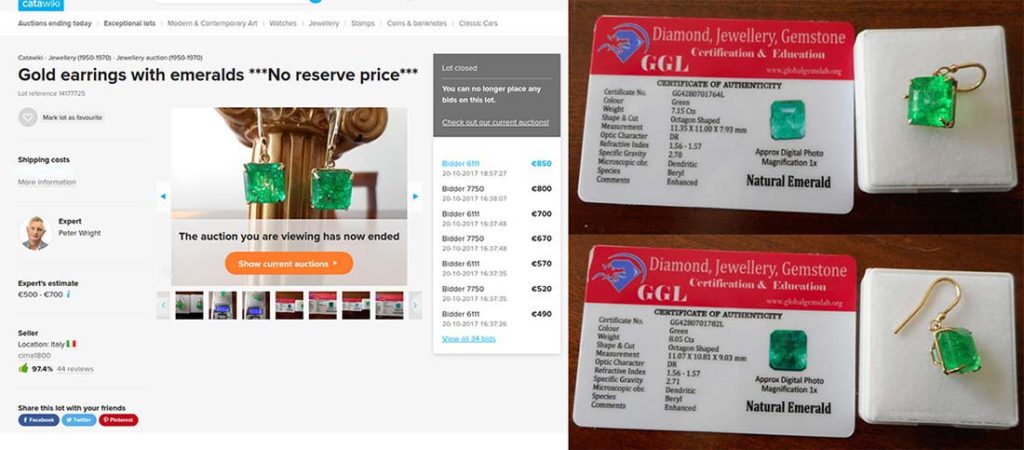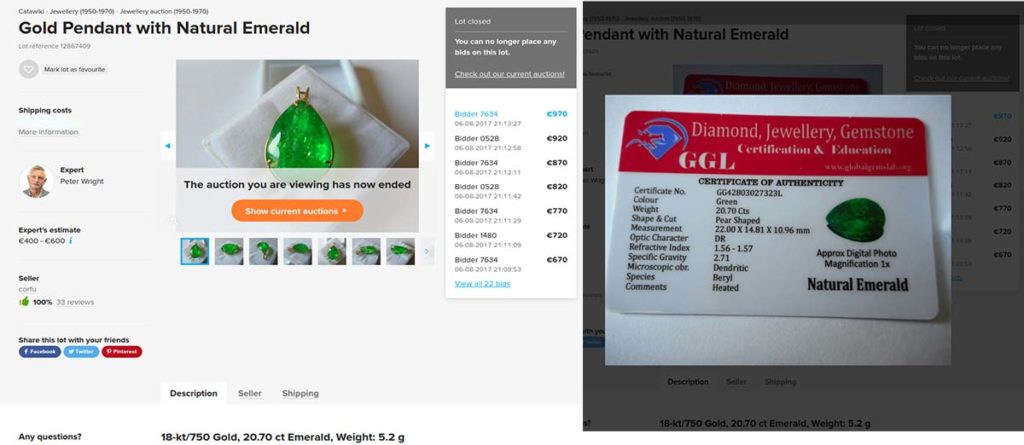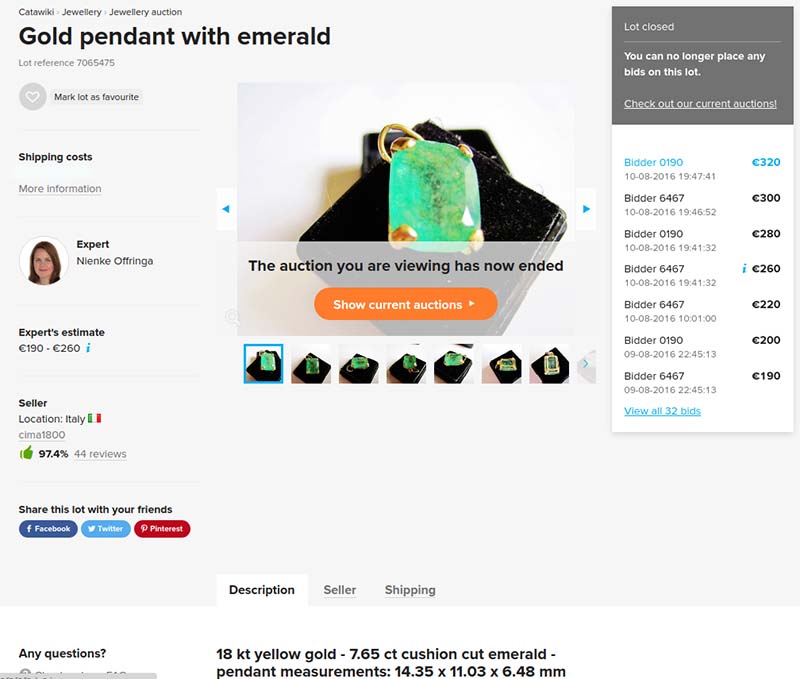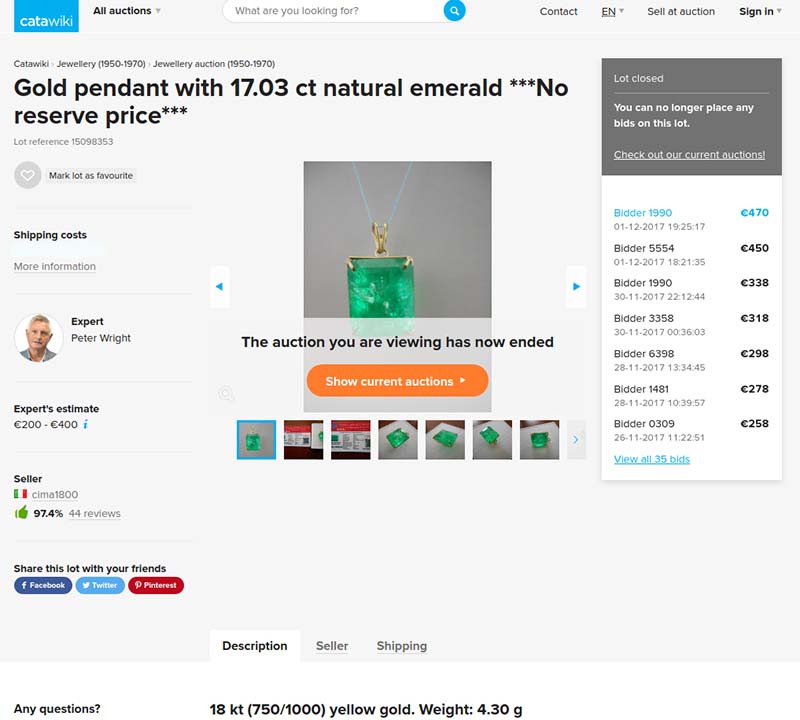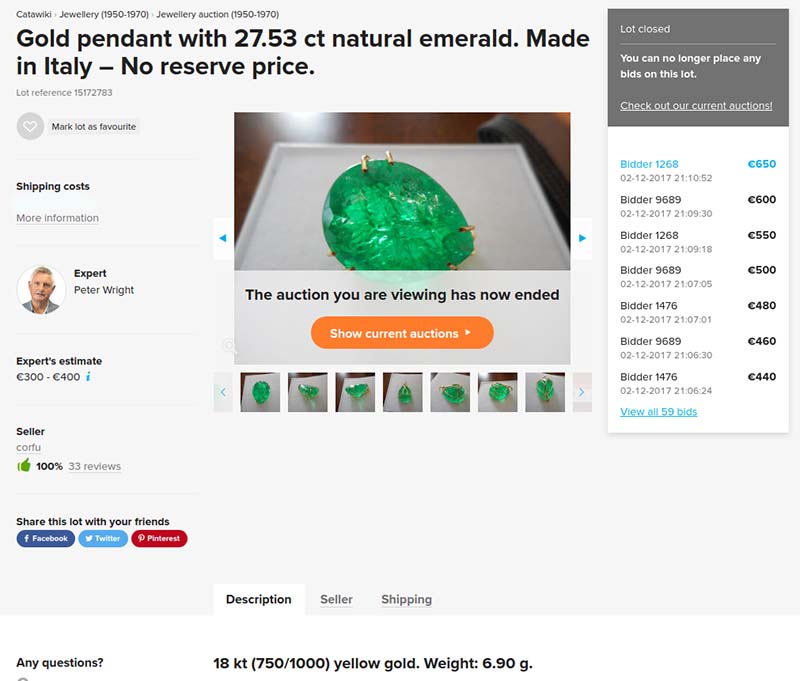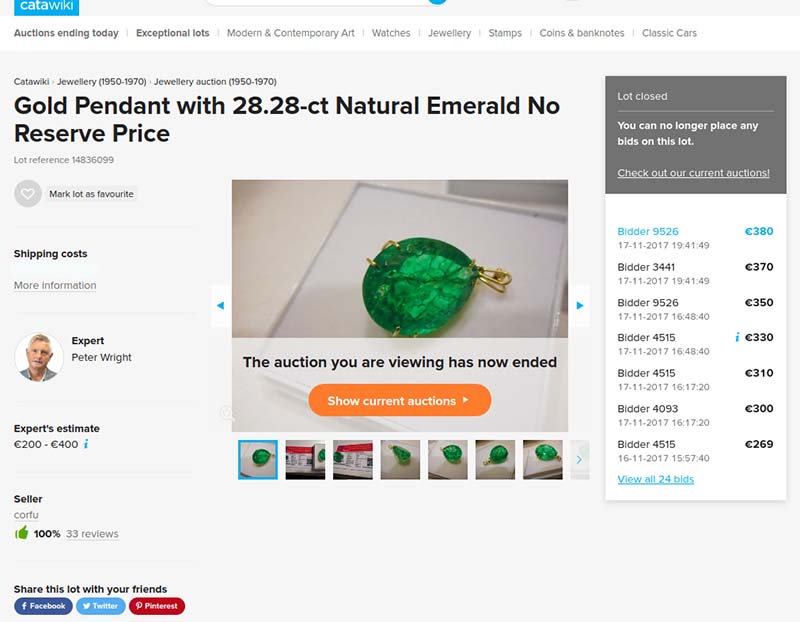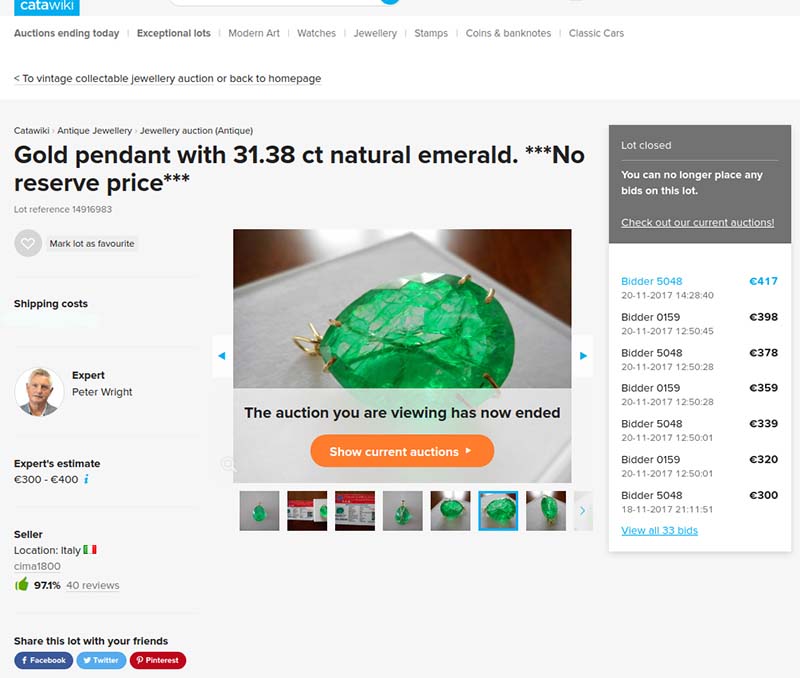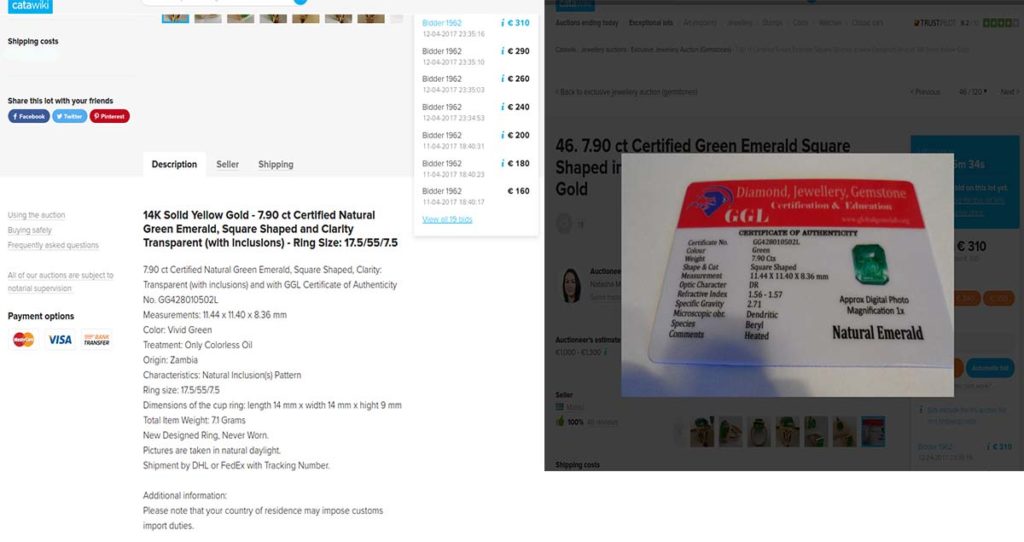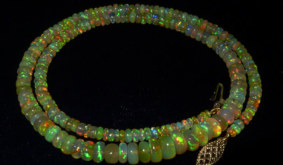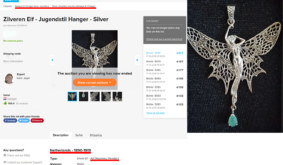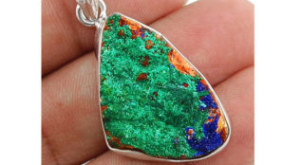Catawiki is an expert-curated online auction house. Every lot offered for sale is reviewed by an expert, which means it should be safe to buy there. But is it? Research shows that jewelry with fake gemstones is being sold on this auction website continuously. So, a question arises – are Catawiki experts no experts at all, or do they benefit from fake items being sold?
Why it Should be Safe to Buy on Catawiki?
Everyone who has been buying gemstones or jewelry online on a regular basis, be it eBay, liveauctioneers.com, or any other auction website or store, knows that there is a good chance to buy a fake item or at least something that is not quite as good as the listing states.
eBay, for example, is full of scam, fake gemstones and jewelry that are shamelessly and repeatedly sold as the real thing. In this regard, Catawiki appears to be a whole different story, for all its auctions are curated by professional auctioneers who are supposed to be experts in their respective fields.
To be more specific, “expert-curated” at Catawiki means that as a seller you cannot list and sell whatever you’d like. Instead, you submit your lot (its description, photos, any certificates or documents) to an expert, who then reviews each lot individually and either approves it, requires additional information (adjustments), or rejects it.
Obviously, an expert traditionally is called “expert” for a good reason: because he or she has expertise in the respective field, and that should serve as a warranty for others who are not experts in that field that they can rely on the expert’s opinion and buy safely. But is it all that good in practice as it is in theory?
Catawiki Experts’ Love for Fake Emeralds
Jewelry with all kinds of fake gemstones is being sold on Catawiki. However, one type especially stands out: jewelry with fake emeralds. It is being sold on Catawiki in substantial quantities. How come? In most cases, it is quite easy to determine whether an item is fake.
Obviously, the problem lies with the experts who do not see what should be obvious to anyone calling oneself an expert. I’m not saying that they are not jewelry and/or gemstone experts or even graduate gemologists.
Let’s assume for the moment that they are. Otherwise, why would Catawiki hire them in the first place? However, to be able to evaluate a piece of jewelry or gemstone based on its photos and description alone takes a whole different set of qualities, knowledge, and experience than a gemologist or expert would use under normal, “real-life” conditions.
You do not have the option of holding that piece of jewelry in your hands, examining it under a microscope, or using other equipment a gemologist would normally have at hand. All you have is photos and item description the potential seller has provided.
Nevertheless, it is possible to tell the fake from the real thing in most cases. Where it is not, Catawiki experts have the authority to request additional information and proof. So, there is no excuse for accepting fake jewelry for sale, especially if that happens on a regular basis. That being said, let’s get to the core of the issue.
An Expert Ought to Know it’s a Fake Emerald # 1: Visual characteristics
Emeralds possess a wide range of hues and shades of green, ranging from light green to intense green. Inclusion free emeralds is a huge rarity. Their process of formation is very complex and takes hundreds of millions of years. Therefore, it occurs as a highly included gem. Emerald has numerous characteristic inclusion patterns, and an expert should be aware of those.
More information on emerald inclusions can be found here.
Natural emeralds do not have the kind of inclusions and color zoning that can be seen in the photos below (Figures 2-5). One of the most noticeable characteristics is the color zoning where there is a sharp transition between vivid green sectors and colorless sectors within the stone as if fractures of a colorless stone had been filled with a green, foreign substance that had not been able to penetrate the stone beyond those fractures.
The other is color itself – it is unnatural for emeralds to have such a specific, light, vivid green color.
An Expert Ought to Know it’s a Fake Emerald # 2: Never in Silver!
Oh, come on, emeralds as big as tens of carats (the biggest I have noticed so far is 31.38 carats) set in sterling silver?! It must be a joke!
Traditionally, the dilemma in such cases is whether to set emeralds this big in 14K gold, 18K gold, or platinum. The last two are considered to emphasize the gemstone’s value to a greater, more appropriate extent. Silver, as a setting, is never the choice for gemstones of this caliber.
Silver is a cheap metal (around $0.50 per gram), and it would substantially undermine the value of any valuable gemstone. Even gemstones worth only a few hundred dollars are extremely rare to be found in silver settings, not to mention gemstones more valuable than that.
If these were real emeralds (Figures 6-9), they would cost thousands and the biggest of them – tens of thousands of dollars! To set such a gemstone in silver would be an option only for a lunatic because that’s a safe way of losing money, most likely – a lot of money.
Should an expert know that? Absolutely! I would even say that you don’t have to be that much of an expert to understand this, but for an expert it should be… obvious.
An Expert Ought to Know it’s a Fake Emerald # 3: The Certificates
Most of the Catawiki’s fake emerald jewelry is being sold with funny certificates. They might appear as an extra or added value for a regular person but should serve as the red flag for an expert. Most of these are GGL (www.globalgemslab.org) certificates of authenticity on cheap, credit card size plastic (Figures 10-13).
The funny thing about these certificates is that you can actually track them at GGL’s website. Obviously, this is supposed to make them look like a serious gemstone certification lab, like GIA, IGI, or GRS Swisslab. I truly believe that this is a nice marketing move (if anything like that can actually be said about scammers), and I have no doubt that it works to deceive a regular person on most occasions.
The truth, however, is that these certificates are not worth the plastic they are printed on. Literally. Oftentimes even the measurements given in the certificate substantially differ from the stone’s true dimensions.
However, even that is not the most important thing. A true expert should know what is going on in the online marketplace, should know what and where is being sold, and what type of scam is taking place. An expert should be aware that there are tons of these “emeralds” with GGL certificates (original, verifiable at http://www.globalgemslab.org) available on eBay at prices as low as $1 to $4 per carat.
An Expert Ought to Know it’s a Fake Emerald # 4: Expert’s Estimate (Appraisal)
or
Do They Actually Know?
How can it be explained that a piece of gold jewelry with an emerald as big as tens of carats (the biggest weighs staggering 31.38 carats; see images below) is appraised at 200 EUR to maximum 400 EUR (Figures 14-18)?
These appraisals are so shocking that I was speechless when I saw them for the first time.
Note that there is the value of gold used in making the item, there is the cost of the work. So, after deducting these expenses, what is left for the emerald itself?
If you look at the appraisal’s lower end, it is literally zero; if at the higher – it’s maximum 100 to 150 EUR! Again, you do not have to be an expert to understand that it is completely insane, impossible! These stones, if they were natural emeralds, would cost thousands of dollars.
Is there any reasonable explanation for such appraisals? I see only one – they know what they are doing, they know that these are not real emeralds, and they knowingly take part in deceiving buyers. Remember, they are “skillful experts” (read: fraudsters) at the fastest growing online auction house in Europe…
Catawiki’s Top-Level Unprofessionalism
When an expert pays no attention to a gemstone’s visual characteristics which clearly indicate that something is wrong with that gemstone, to the obviously fake certificates, the suspicious fact that supposedly very expensive gemstones are set in cheap silver settings, and when appraisals (estimates) are apparently inconsistent with what real emerald jewelry would cost, could it get more unprofessional than that?
Surprisingly, yes! Apparently, Catawiki’s experts have no problem ignoring something that is in black and white. A few examples:
#1. The description (Figure 19) says: “Silver pendant with natural emerald of 4.70 ct…”, while the certificate clearly states the emerald weighs 5.10 carats. The listing says the measurements of this emerald are 10.85 x 7.06 mm, while the certificate states they are 11.37 x 7.01 mm.
Does this certificate belong to the “emerald” in question, or it has nothing to do with this “emerald” at all? It is also highly likely that the weight and measurements given in the certificate do not match the “emerald’s” actual weight and measurements. For GGL certificates it is quite normal, and it tells a lot about the actual trustworthiness of these certificates. Apparently, Catawiki’s experts do not care.
Example #2. The description (Figure 20) says: “Treatment: Only Colorless Oil”, while the certificate states: “Heated”. This makes a huge difference but not for Catawiki’s experts, obviously.
Conclusion
I presume enough evidence has been provided for anyone to be able to draw their own conclusions.
I would like to highlight only one important aspect: the extensive evidence gathered clearly indicates that it is not a single, isolated case of unprofessional (and most likely – intentional) behavior resulting in buyer deception and fraud. It is a general pattern of accepted behavior at the Catawiki auction house.
And it is not a single expert engaging in such behavior, either. I have spotted at least five of them (see screenshots above).
Is it their own incentive to engage in such unethical activities or do they receive their orders from the management? This remains unclear.
However, one thing is absolutely clear – these buyers have substantially overpaid for something they did not intend to buy, for something that is not the real thing.
Some of the unluckiest bidders have paid as much as 1000 EUR plus 9% auction fee, plus shipping fees for a few grams of sterling silver worth $3 and a fake gemstone that can be bought for $10 to $20 on eBay. Not the best investment, right?
P.S. If you want to know how to bid to win on eBay (and pay less), read this post.
Be smart. Shop smart.

